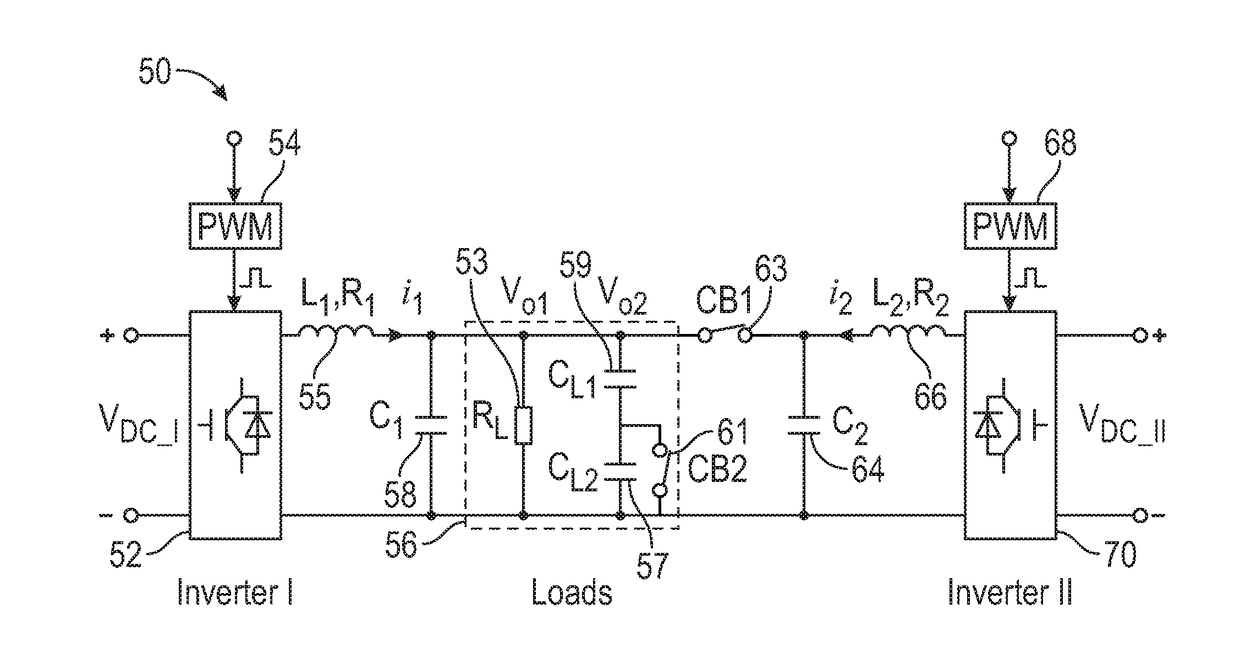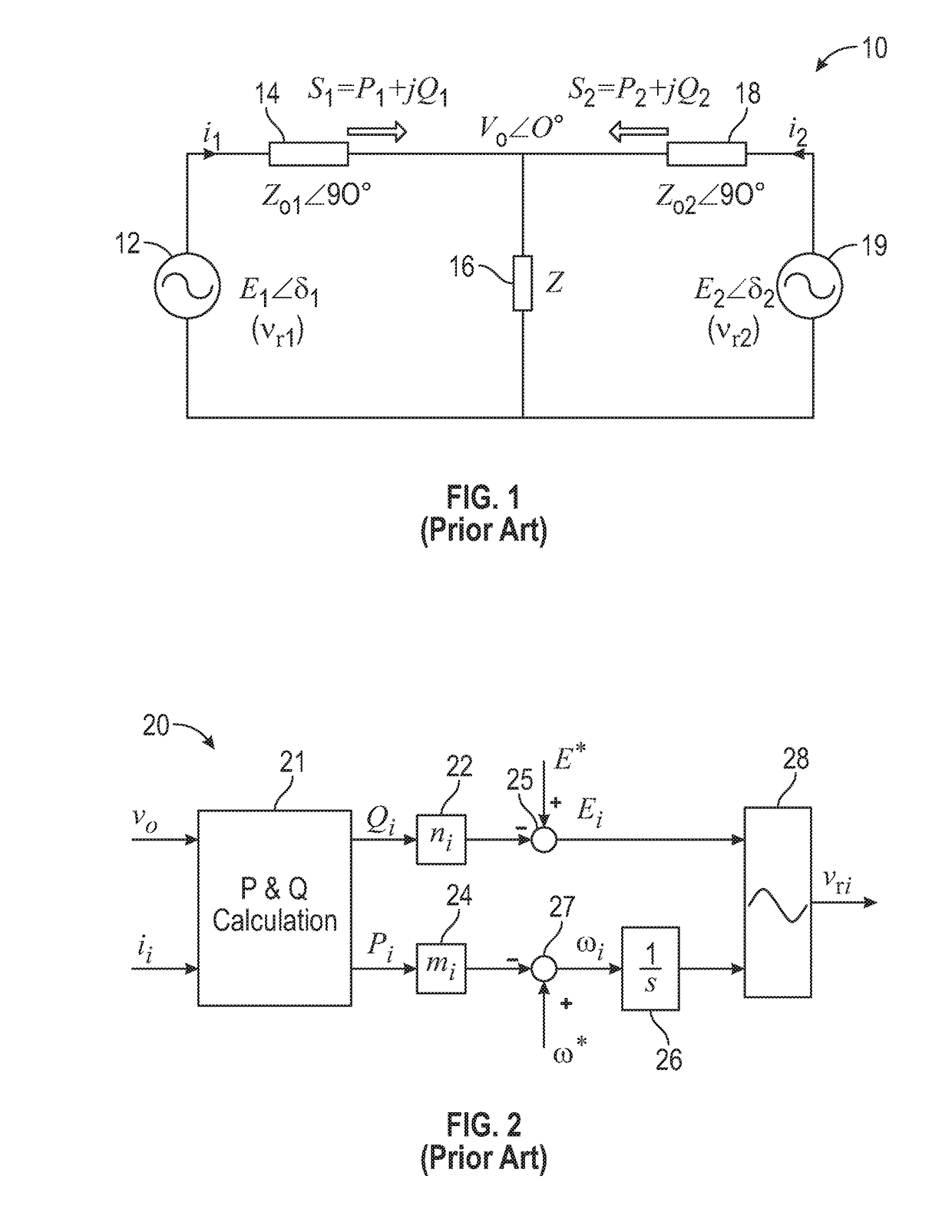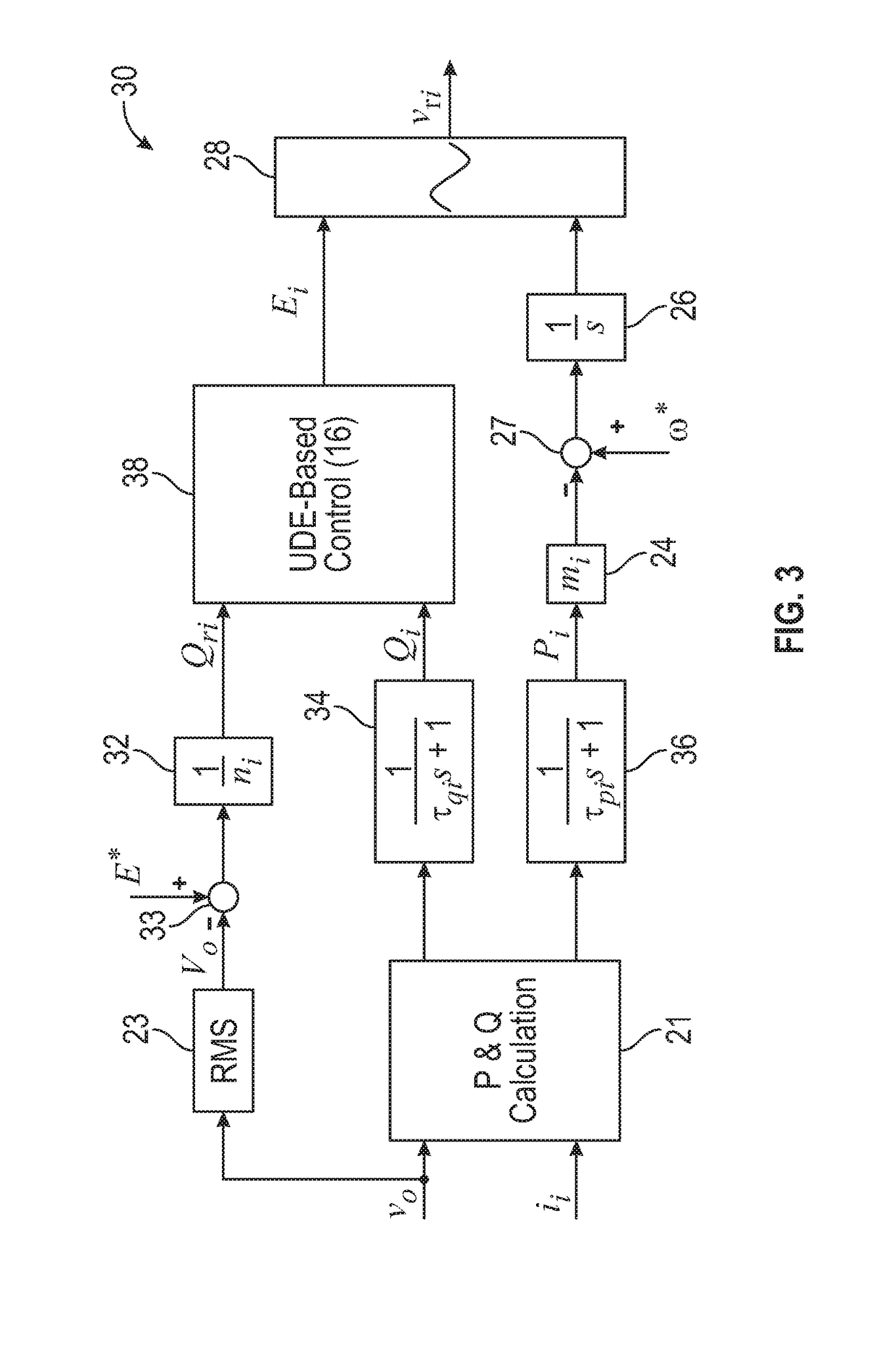Ude-based robust droop control for parallel inverter operation
a parallel inverter and robust technology, applied in the direction of single network parallel feeding arrangement, power conversion system, electrical apparatus, etc., can solve the problems of inability to handle system disturbances, inaccurate reactive power sharing, and traditional droop control strategies. achieve accurate proportional load sharing
- Summary
- Abstract
- Description
- Claims
- Application Information
AI Technical Summary
Benefits of technology
Problems solved by technology
Method used
Image
Examples
case 1
[0072, or the nominal case, involves a situation in which initially the load is connected to Inverter I only, and Inverter II is connected to the load at t=2 s by turning the switch CB1 ON. At t=6 s, the Inverter II is disconnected. The system response curves with the proposed UDE-based robust droop control of equations (16) and (6) are shown in FIGS. 5A-5F. Initially, only Inverter I is connected to the load with switch CB1 OFF and switch CB2 ON. The frequency drop is shown in graph 88 of FIG. 5D due to the effect of positive real power as shown in graph 82 of FIG. 5A. The voltage drop as shown in graph 89 is high in the single-inverter mode, and the negative drop direction is due to the effect of negative reactive power as shown in graph 84 in FIG. 5B with the capacitive load. At t=2 s, the switch CB1 is turned ON, and Inverter II is connected to the load. The load voltage Vo2 is measured by Inverter II for voltage synchronization with the zero-crossing technique. Some small spike...
case 2
[0075 or the disturbance rejection case: In this case, three disturbances are considered: i) change of the output impedance; ii) change of the DC-link voltage; and iii) change of the load. FIGS. 6A-6D illustrate a group of graphs 102, 104, 106, 108, 110, 112, 114, 116, 118, 120, 122, and 124 depicting transient experimental results under different scenarios, in accordance with example embodiments. Initially, the load is connected to the Inverter I only, with switch CB1 OFF and switch CB2 ON. Inverter II is connected to the load at t=2 s by turning switch CB1 ON. At t=6 s, three disturbances are applied to the system, separately. At t=10 s, Inverter II is disconnected.
[0076]i) Change of the output impedance: For change of the output impedance, a virtual output impedance Rv1=3Ω with feedback current is added in Inverter I at t=6 s. This virtual output impedance mimics the disturbance from the variation of output impedance.
[0077]The experimental results are shown in the left column of ...
PUM
 Login to View More
Login to View More Abstract
Description
Claims
Application Information
 Login to View More
Login to View More - R&D
- Intellectual Property
- Life Sciences
- Materials
- Tech Scout
- Unparalleled Data Quality
- Higher Quality Content
- 60% Fewer Hallucinations
Browse by: Latest US Patents, China's latest patents, Technical Efficacy Thesaurus, Application Domain, Technology Topic, Popular Technical Reports.
© 2025 PatSnap. All rights reserved.Legal|Privacy policy|Modern Slavery Act Transparency Statement|Sitemap|About US| Contact US: help@patsnap.com



